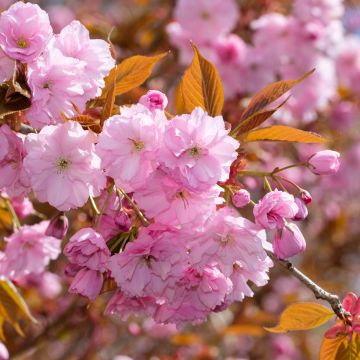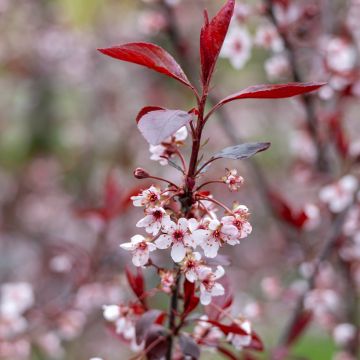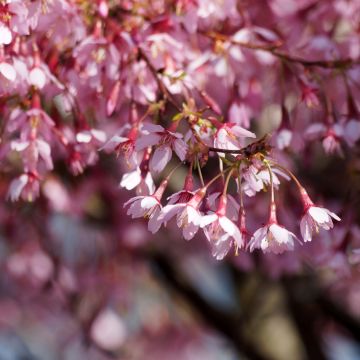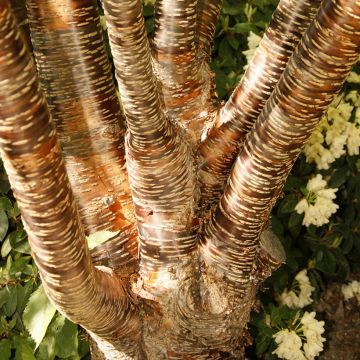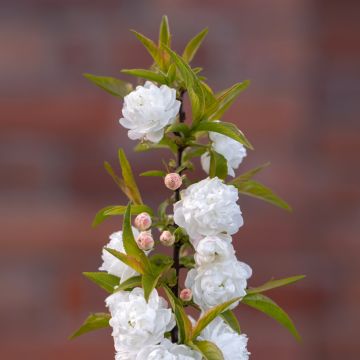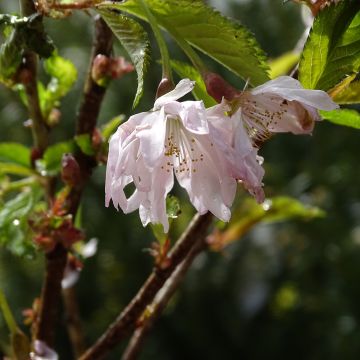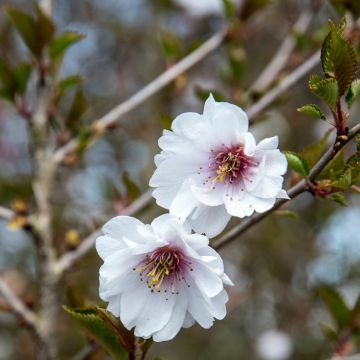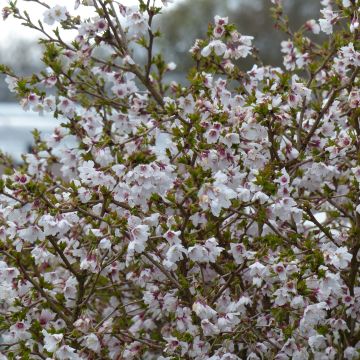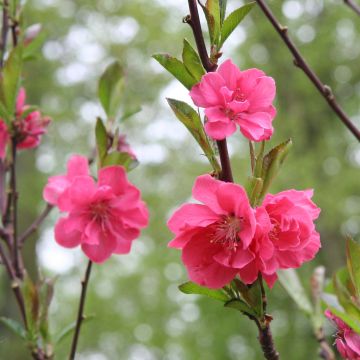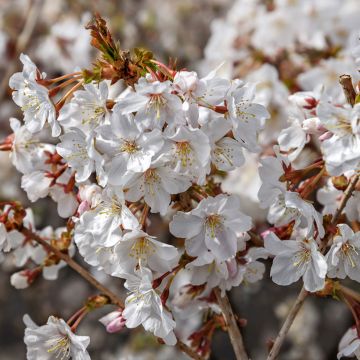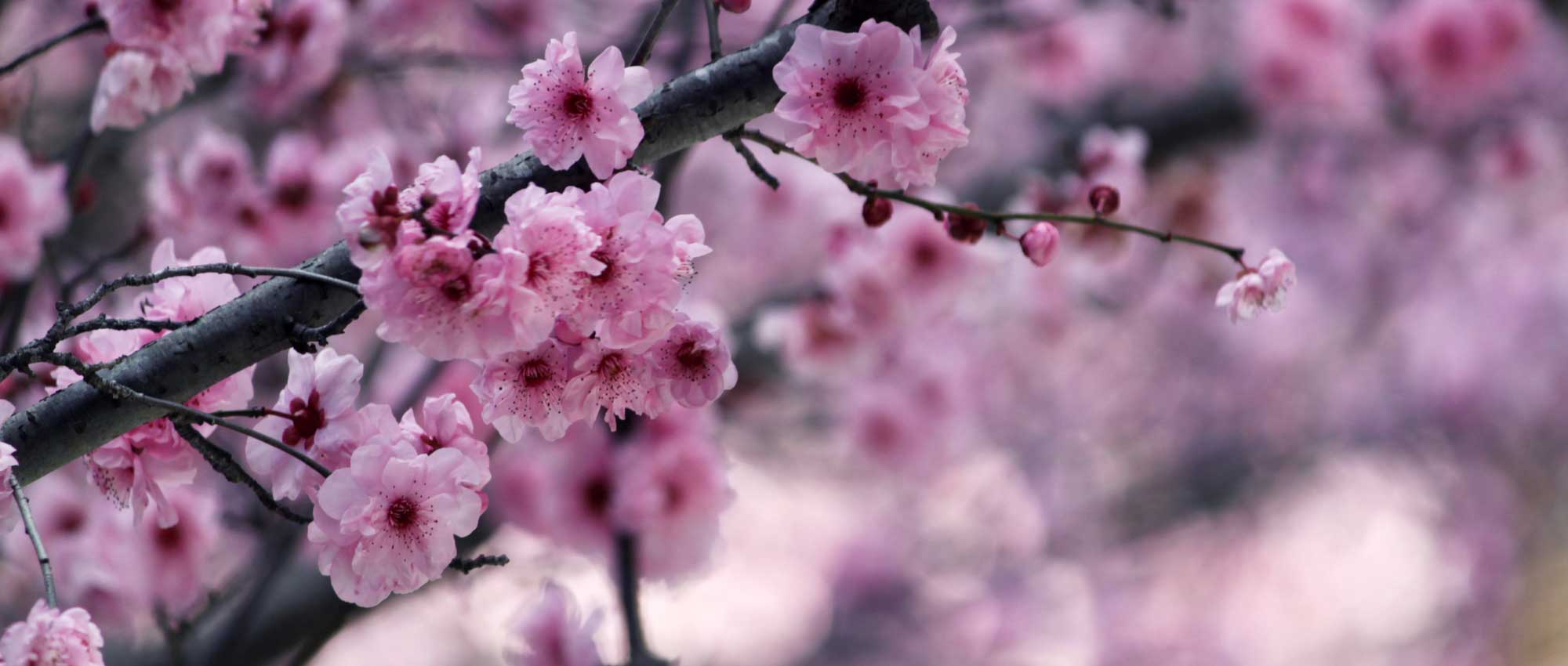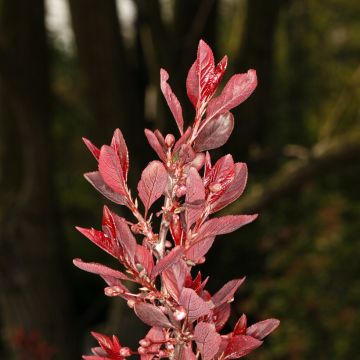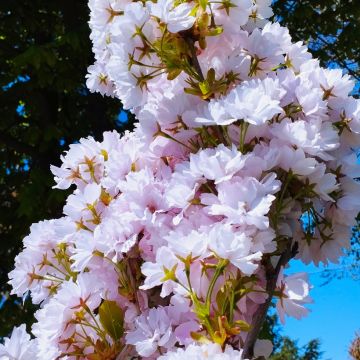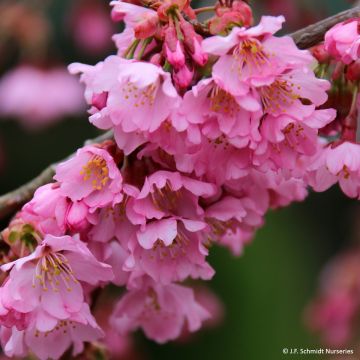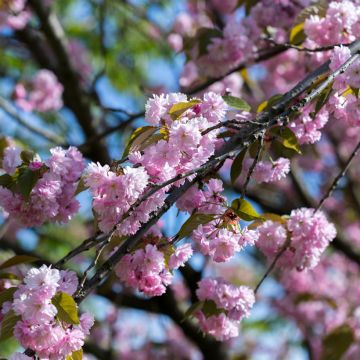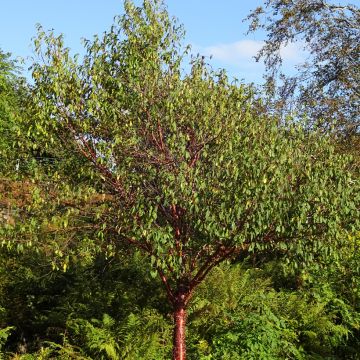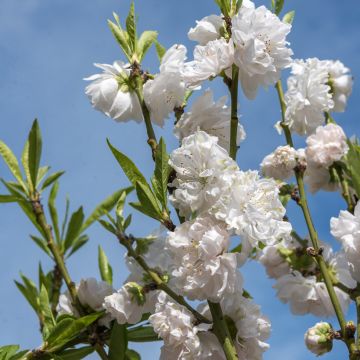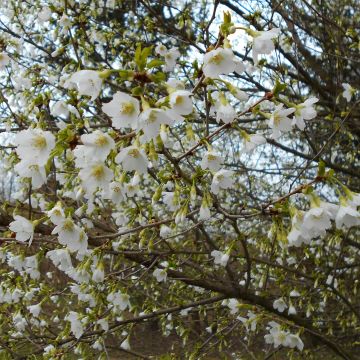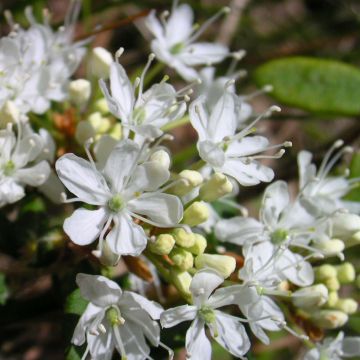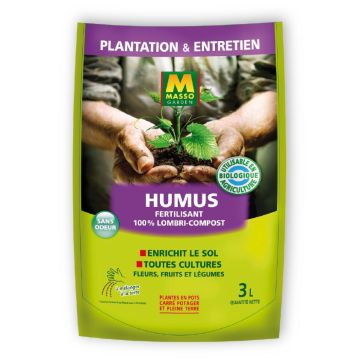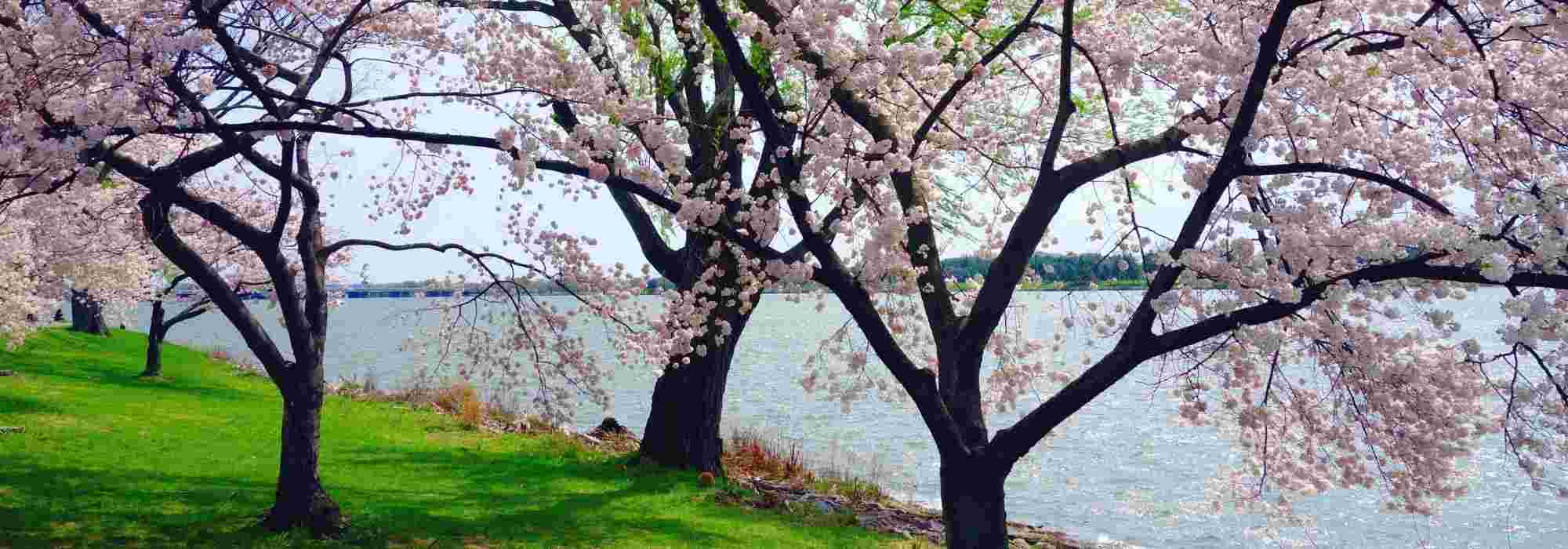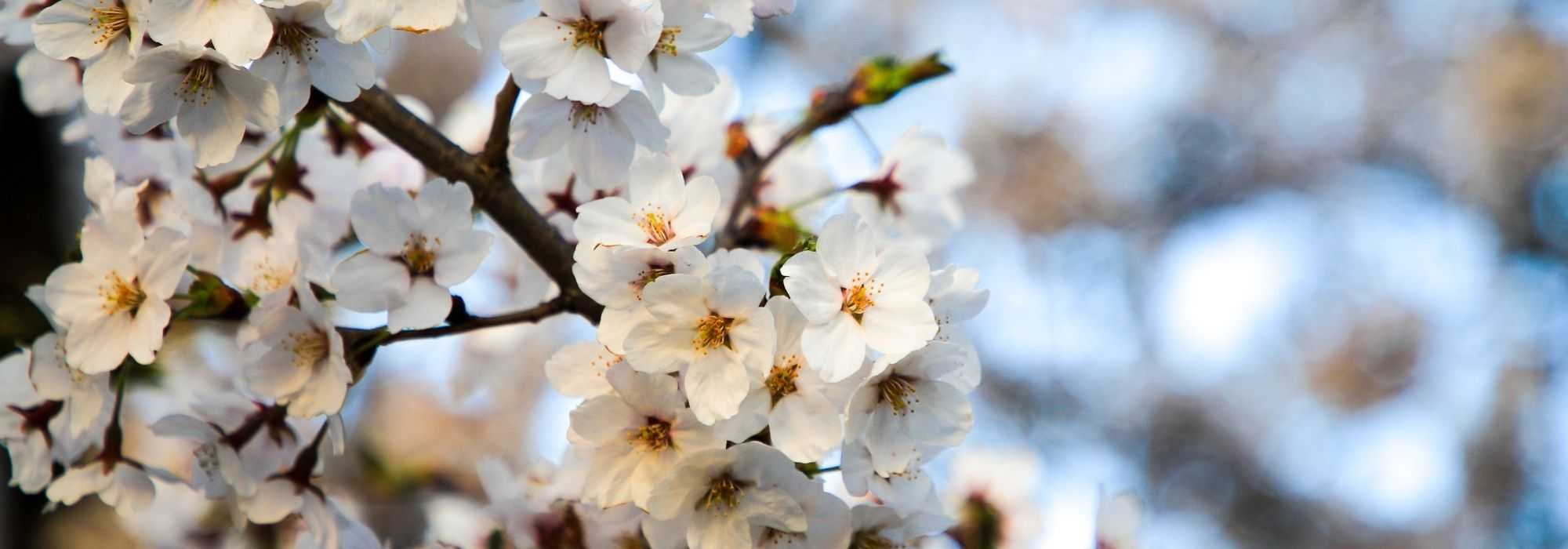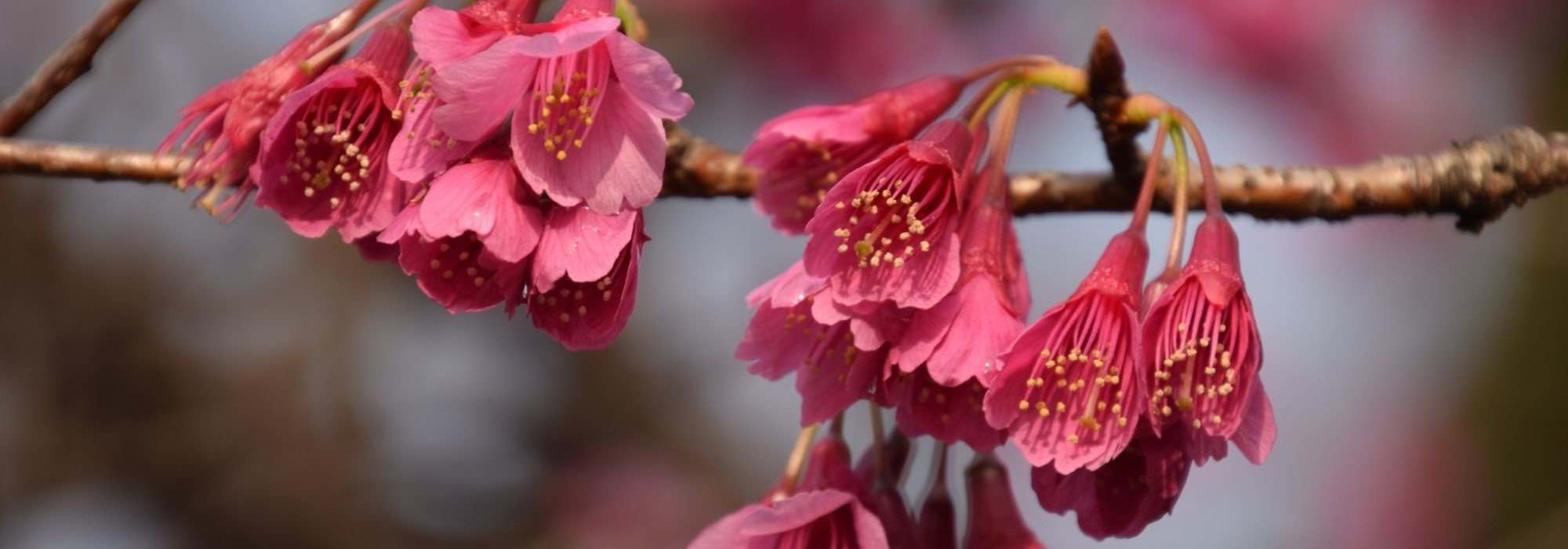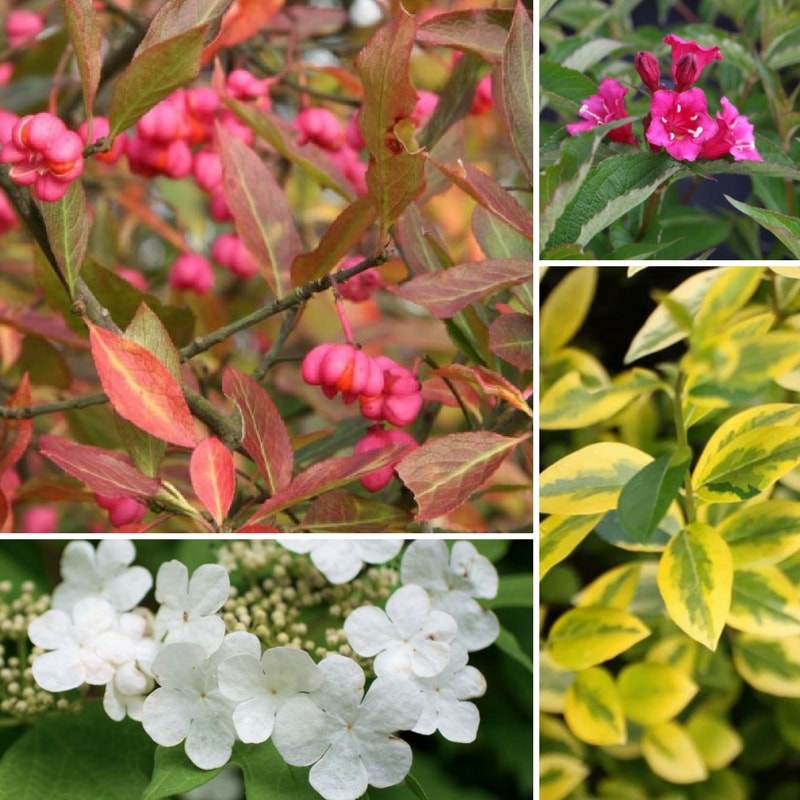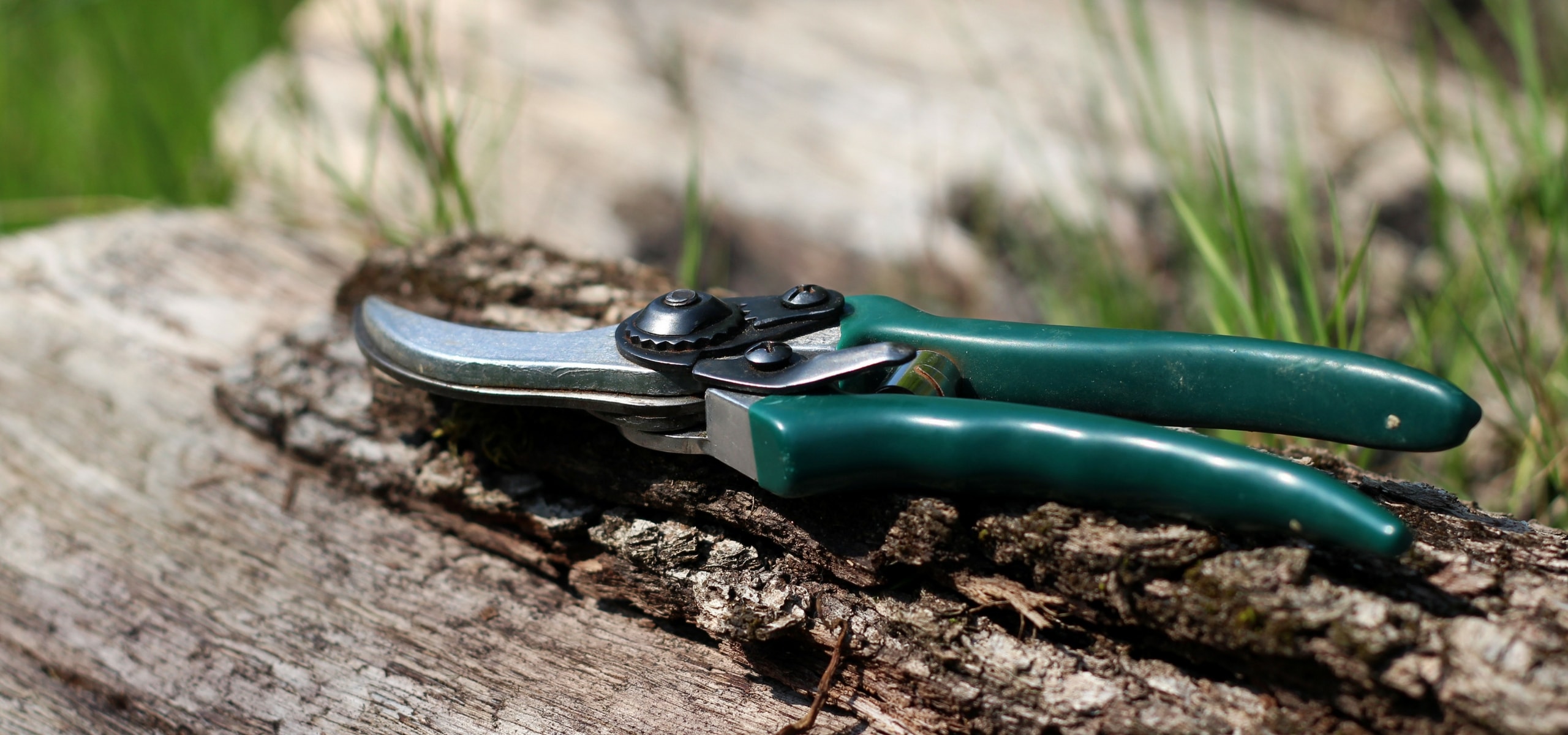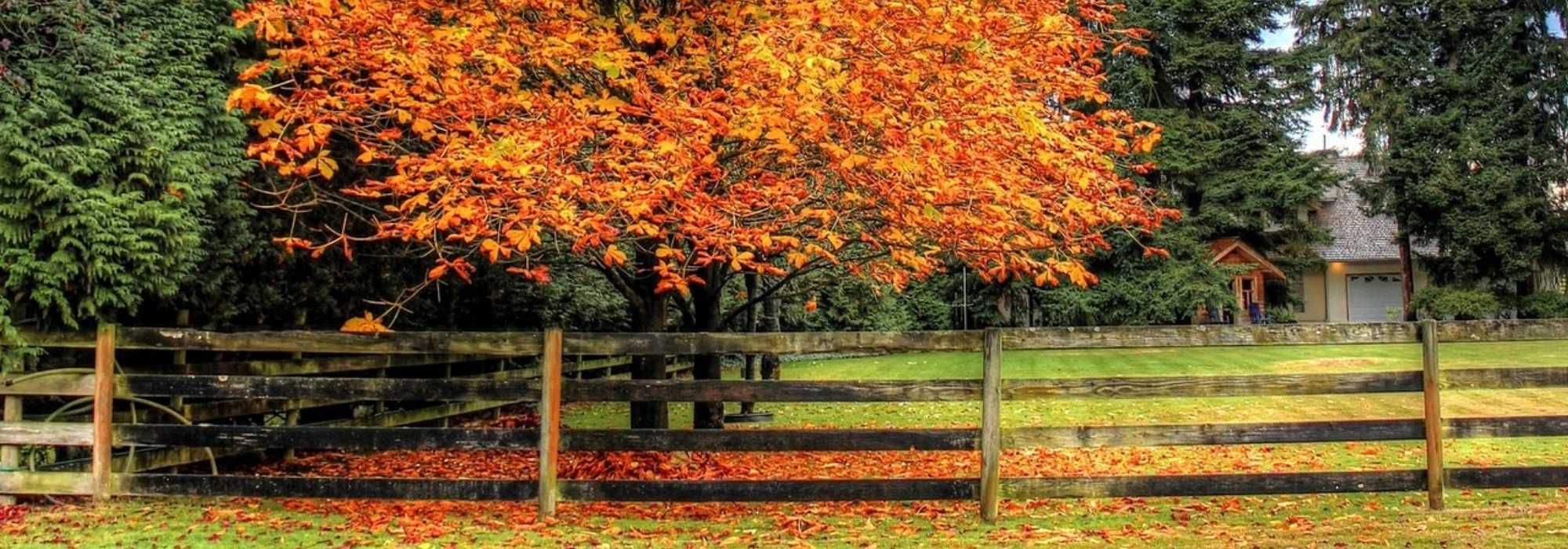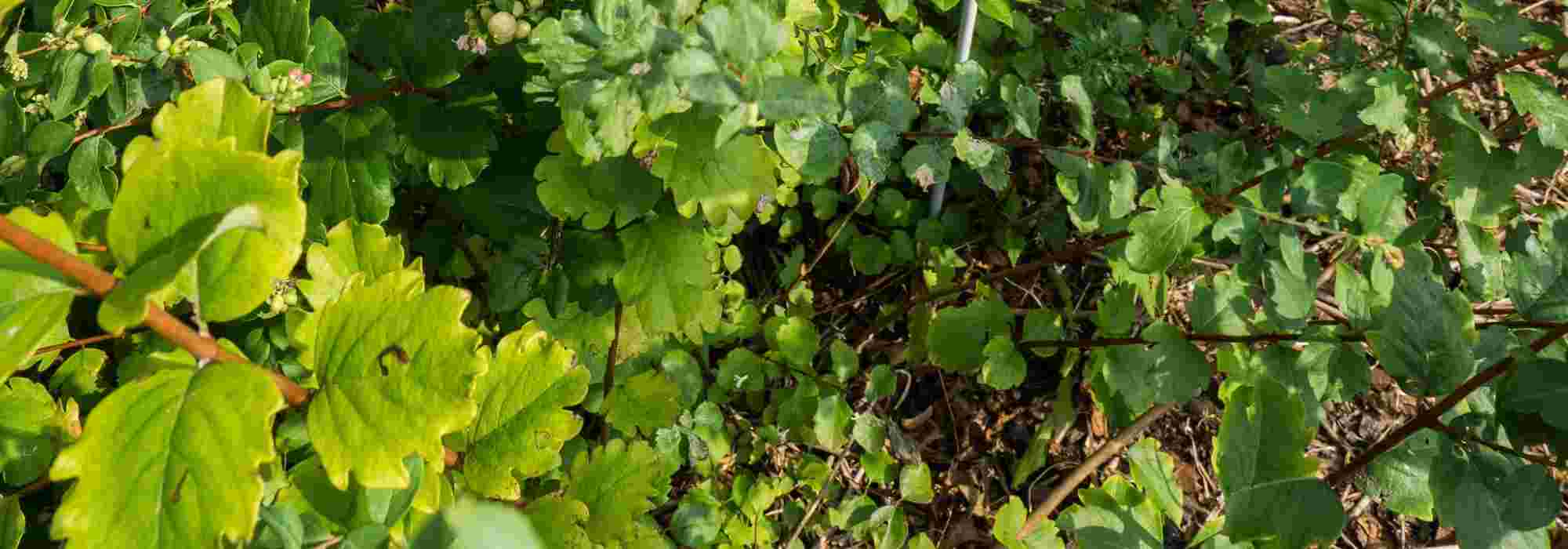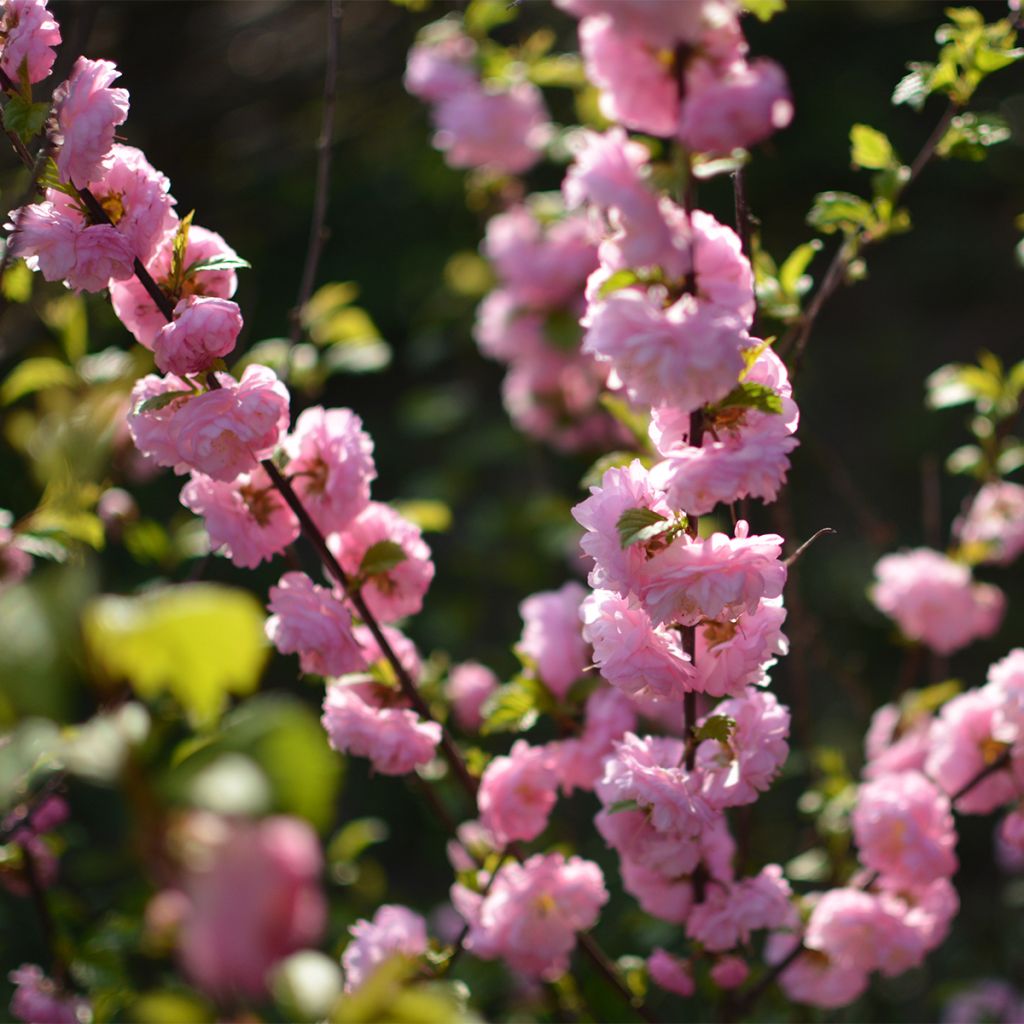

Prunus glandulosa Sinensis - Dwarf flowering Almond
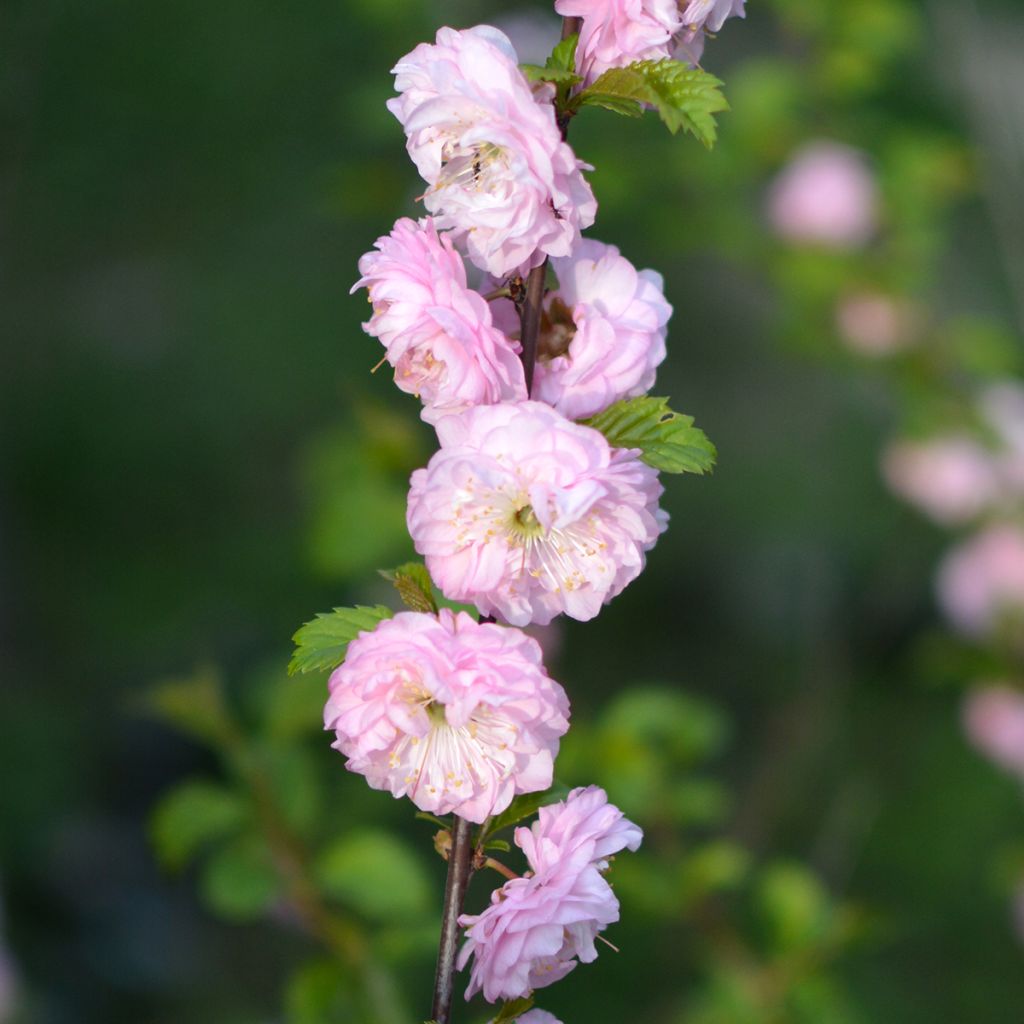

Prunus glandulosa Sinensis - Dwarf flowering Almond
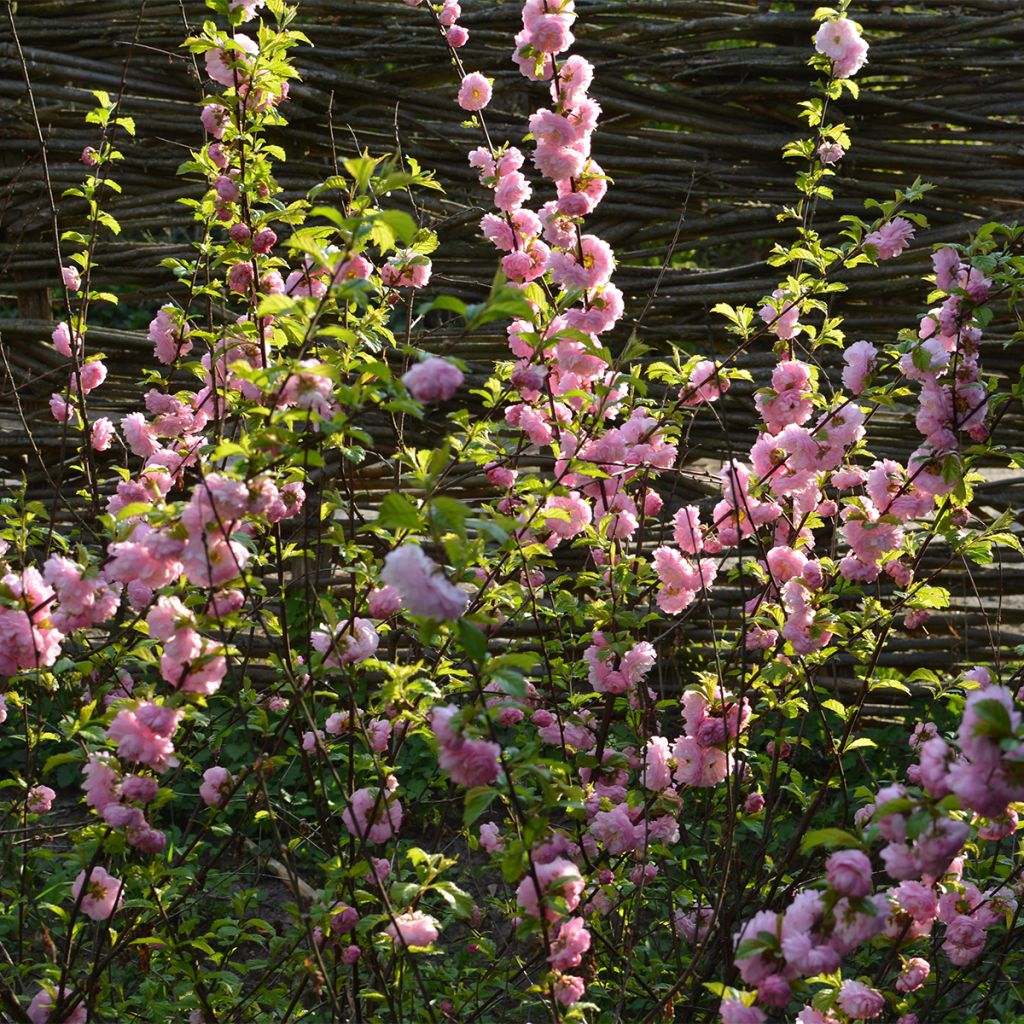

Prunus glandulosa Sinensis - Dwarf flowering Almond
Prunus glandulosa Sinensis - Dwarf flowering Almond
Prunus glandulosa Sinensis (Rosea Plena)
Dwarf flowering Almond, Chinese Bush Cherry
Special offer!
Receive a €20 voucher for any order over €90 (excluding delivery costs, credit notes, and plastic-free options)!
1- Add your favorite plants to your cart.
2- Once you have reached €90, confirm your order (you can even choose the delivery date!).
3- As soon as your order is shipped, you will receive an email containing your voucher code, valid for 3 months (90 days).
Your voucher is unique and can only be used once, for any order with a minimum value of €20, excluding delivery costs.
Can be combined with other current offers, non-divisible and non-refundable.
Why not try an alternative variety in stock?
View all →This plant carries a 24 months recovery warranty
More information
We guarantee the quality of our plants for a full growing cycle, and will replace at our expense any plant that fails to recover under normal climatic and planting conditions.

Does this plant fit my garden?
Set up your Plantfit profile →
Description
The Prunus glandulosa 'Sinenis', also known as Prunus glandulosa 'Rosea Plena', is a true ambassador of spring's arrival. This small and absolutely delightful bush, sometimes known as Japanese almond or flowering cherry, forms in any case a rounded bush of great freshness, literally covered in soft pink pompoms, arranged all along its bare branches. It is an endearing shrub, both generous and compact, resistant and easy to grow, but its early flowering fears late frosts.
The Prunus glandulosa is native to China and Japan. Botanists classify it in the rose family, in the dwarf Prunus category, and in the cherry section, even though it shares some common characteristics with almonds and peaches. It is a robust and hardy deciduous species.
Of moderately fast growth, it forms a bush of slender stems that will not exceed 1.50m (4 ft 11 in) in all directions (on average 1.20m (3 ft 11 in) depending on growing conditions). When pruned short, close to the ground after flowering, this shrub produces in just one season a profusion of stems that will bear flowers the following spring. The branches, ranging from red to brown, are covered in flowers just before the appearance of the leaves, usually in April. These are small pastel pink flowers, about 4cm in diameter, that appear all along the branches of the previous year, solitarily or in pairs. Very double, they are almost round in shape, like small crumpled pompoms. The small light green leaves, with an ovate shape, narrow and slightly dentate, measure about 7 cm (2.8 in) in length. They turn yellow in autumn before falling.
This flowering cherry can be planted in isolation, in a small garden, for its charming flowering, elegant habit, and compact size. It will also naturally find its place in a border of small spring-flowering shrubs or in a low and free hedge. It will wonderfully accompany a Japanese quince, a flowering currant, the Chinese almond Multiplex, as well as spring-flowering bulbs. It can also be planted in a pot on a terrace or balcony.
Its long flowering branches will make wonderful first spring bouquets for the home.
Prunus glandulosa Sinensis - Dwarf flowering Almond in pictures
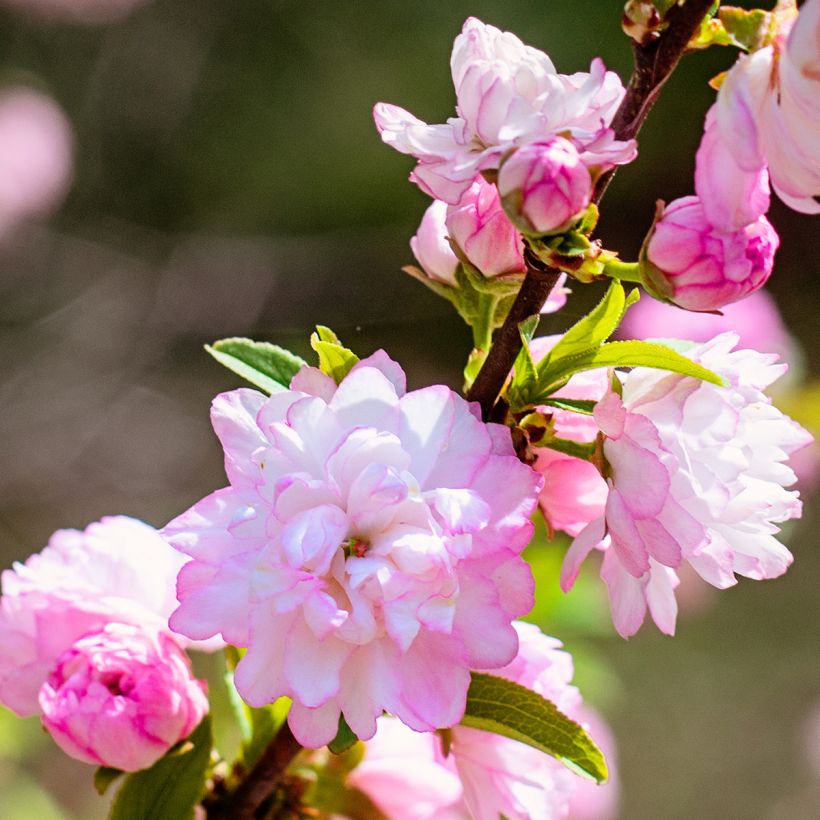

Plant habit
Flowering
Foliage
Botanical data
Prunus
glandulosa
Sinensis (Rosea Plena)
Rosaceae
Dwarf flowering Almond, Chinese Bush Cherry
China
Other Prunus
View all →Planting and care
Easy to grow, the Prunus glandulosa Rosea Plena requires little maintenance. It should be planted in full sun, in ordinary soil, not too dry but rather moist, fairly rich, but well-drained. It does not like compacted and waterlogged soils and fears late frosts that can compromise flowering. A very short pruning is necessary every 2 years, just after flowering, to promote the development of numerous branches that will bear flowers the following spring.
Planting period
Intended location
Care
Planting & care advice
This item has not been reviewed yet - be the first to leave a review about it.
Haven't found what you were looking for?
Hardiness is the lowest winter temperature a plant can endure without suffering serious damage or even dying. However, hardiness is affected by location (a sheltered area, such as a patio), protection (winter cover) and soil type (hardiness is improved by well-drained soil).

Photo Sharing Terms & Conditions
In order to encourage gardeners to interact and share their experiences, Promesse de fleurs offers various media enabling content to be uploaded onto its Site - in particular via the ‘Photo sharing’ module.
The User agrees to refrain from:
- Posting any content that is illegal, prejudicial, insulting, racist, inciteful to hatred, revisionist, contrary to public decency, that infringes on privacy or on the privacy rights of third parties, in particular the publicity rights of persons and goods, intellectual property rights, or the right to privacy.
- Submitting content on behalf of a third party;
- Impersonate the identity of a third party and/or publish any personal information about a third party;
In general, the User undertakes to refrain from any unethical behaviour.
All Content (in particular text, comments, files, images, photos, videos, creative works, etc.), which may be subject to property or intellectual property rights, image or other private rights, shall remain the property of the User, subject to the limited rights granted by the terms of the licence granted by Promesse de fleurs as stated below. Users are at liberty to publish or not to publish such Content on the Site, notably via the ‘Photo Sharing’ facility, and accept that this Content shall be made public and freely accessible, notably on the Internet.
Users further acknowledge, undertake to have ,and guarantee that they hold all necessary rights and permissions to publish such material on the Site, in particular with regard to the legislation in force pertaining to any privacy, property, intellectual property, image, or contractual rights, or rights of any other nature. By publishing such Content on the Site, Users acknowledge accepting full liability as publishers of the Content within the meaning of the law, and grant Promesse de fleurs, free of charge, an inclusive, worldwide licence for the said Content for the entire duration of its publication, including all reproduction, representation, up/downloading, displaying, performing, transmission, and storage rights.
Users also grant permission for their name to be linked to the Content and accept that this link may not always be made available.
By engaging in posting material, Users consent to their Content becoming automatically accessible on the Internet, in particular on other sites and/or blogs and/or web pages of the Promesse de fleurs site, including in particular social pages and the Promesse de fleurs catalogue.
Users may secure the removal of entrusted content free of charge by issuing a simple request via our contact form.
The flowering period indicated on our website applies to countries and regions located in USDA zone 8 (France, the United Kingdom, Ireland, the Netherlands, etc.)
It will vary according to where you live:
- In zones 9 to 10 (Italy, Spain, Greece, etc.), flowering will occur about 2 to 4 weeks earlier.
- In zones 6 to 7 (Germany, Poland, Slovenia, and lower mountainous regions), flowering will be delayed by 2 to 3 weeks.
- In zone 5 (Central Europe, Scandinavia), blooming will be delayed by 3 to 5 weeks.
In temperate climates, pruning of spring-flowering shrubs (forsythia, spireas, etc.) should be done just after flowering.
Pruning of summer-flowering shrubs (Indian Lilac, Perovskia, etc.) can be done in winter or spring.
In cold regions as well as with frost-sensitive plants, avoid pruning too early when severe frosts may still occur.
The planting period indicated on our website applies to countries and regions located in USDA zone 8 (France, United Kingdom, Ireland, Netherlands).
It will vary according to where you live:
- In Mediterranean zones (Marseille, Madrid, Milan, etc.), autumn and winter are the best planting periods.
- In continental zones (Strasbourg, Munich, Vienna, etc.), delay planting by 2 to 3 weeks in spring and bring it forward by 2 to 4 weeks in autumn.
- In mountainous regions (the Alps, Pyrenees, Carpathians, etc.), it is best to plant in late spring (May-June) or late summer (August-September).
The harvesting period indicated on our website applies to countries and regions in USDA zone 8 (France, England, Ireland, the Netherlands).
In colder areas (Scandinavia, Poland, Austria...) fruit and vegetable harvests are likely to be delayed by 3-4 weeks.
In warmer areas (Italy, Spain, Greece, etc.), harvesting will probably take place earlier, depending on weather conditions.
The sowing periods indicated on our website apply to countries and regions within USDA Zone 8 (France, UK, Ireland, Netherlands).
In colder areas (Scandinavia, Poland, Austria...), delay any outdoor sowing by 3-4 weeks, or sow under glass.
In warmer climes (Italy, Spain, Greece, etc.), bring outdoor sowing forward by a few weeks.






























